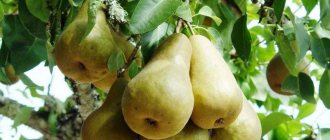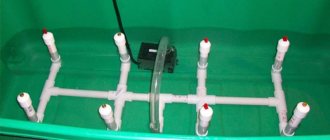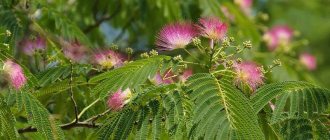Most gardeners, when choosing evergreen coniferous plants, give preference to an unpretentious and very beautiful tree - thuja. In its appearance, thuja is similar to its closest relatives: juniper and cypress. It is characterized by a pyramidal shape, a rich crown, soft scaly needles and grows like a shrub.
Description of the appearance and characteristics of thuja
In our country, this evergreen tree grows in almost all zones. And this is due to the fact that thuja can adapt to any weather conditions and climate. It's a compact plant that doesn't take up much space, but it's surprisingly fluffy. That is why it is so often planted in close rows to each other, creating a hedge. The root system of the thuja also has a compact size, growing not in breadth, but in depth.
A representative of the Cypress family reaches a height of up to 20 meters, but usually in Russia the height of the plant does not exceed 4 meters. Thuja is a long-lived tree; the maximum recorded age of this coniferous beauty is 150 years.
How to plant this evergreen shrub and what should be taken into account when planting it? We will talk about this in our article.
Use in landscape design
Thuja occidentalis variety Smaragd opens up great prospects for the formation of an original type of garden. Ephedra is suitable for paths, edging access areas; it is planted in a special form, ringed with granite. Rows of thujas are suitable for Japanese gardens, hedges, and rock gardens.
Plants that can tolerate acidic soil are planted next to the evergreen thuja; the conifer itself prefers it and has the ability to independently reduce acidity.
Thuja Smaragd looks good alone, in rows of plants of the same type and with conifers of various configurations and colors.
Bushes and fruit trees are planted at a distance of at least 6 meters from the thuja. It is advisable to distinguish between the decorative and fruit zones of the site, since the phytoncides secreted by the ephedra are not very well accepted by apple trees, pears, and berry bushes.
In addition, fruit trees do not readily perceive the phytoncides released by thuja. When arranging compositions on a site, the right solution would be to combine thuja Smaragd with other coniferous plants, but using deciduous plants is not the best option.
What is the root system of thuja?
Thuja is an unpretentious shrub that can easily tolerate different soil compositions. But on fertile soil you can expect more fluffy needles from it. Thuja loves the sun, but not direct sunlight all day long. Therefore, it is worth considering tree planting not only from a design point of view, but also from a biological one.
The most optimal place for the tree will be partial shade, but the full shady side will not allow the crown to fluff up beautifully. The choice of planting site will not affect the quality or growth of the shrub in any way: dense, thin roots, intertwining with each other, form a compact single system.
Wintering
Plants need to be covered for the winter. Burlap is best suited for this purpose, as it will not interfere with the breathing of the thuja. Remember: polymer and synthetic materials do not protect against frost. The fabric should not be pulled too tightly; this may disrupt air circulation, which will lead to the thuja drying out during the thaw and further damage.
You can also use a special fertilizer to help plants survive the winter cold. Just don't overdo it!
Planting a tree
After we have decided on the place of residence of our beauty, we proceed to planting a seedling. Begin:
- It is advisable to plant thuja with a closed root system in the spring season. The system can be considered closed when the roots of the plant are placed in special containers, bags or an earthen coma.
- The planting hole must correspond to the size of the thuja root system. Typically the width and depth are 1 meter. The plant needs to be provided with good drainage, for which you can use pebbles, expanded clay or broken bricks.
- The soil mixture should consist of soil combined with peat or sand, the volume being 2 times less than the soil.
- In order for a coniferous plant to be well established, it is necessary to correctly place the neck of the seedling. It should be located at ground level. If planted higher or lower, the thuja will die.
If you decide to plant young trees in the form of an alley or hedge, then in this case the planting hole will look like a trench. Below is a photo of the root system of a thuja in a closed type.
Possible growing problems and their solutions
Many types of thuja are frost-resistant, so if the needles turn brown in winter, then this is a natural process. In spring it will turn green. If this does not happen, then most likely the roots were exposed to low temperatures.
Lack of nutrition in the soil affects the condition of the tree. You cannot place tree roots in sandy soil, as moisture will go deeper, causing the roots to dry out. It is difficult to fully develop in clay soil due to lack of oxygen. Areas with stagnant water will lead to rotting of the root system. The ideal soil would be well-drained and slightly moist. This is a mixture of turf soil with the addition of sand and peat. The deepening of the root collar or its openness has a bad effect on the appearance of the thuja. In both cases, the plant will begin to wither.
In order for the root system to develop freely, the distance between tree plantings must be at least a meter.
Fertilizers for the plant are required in emergency cases. Excesses of them in the soil lead to drying of the tips of the shoots. But the lack of elements will also affect the condition of the thuja. If the needles have turned red-violet, you need to urgently add fertilizers with phosphorus to the soil. The crown will turn pale due to lack of nitrogen, and yellow due to lack of iron. You can get rid of the problem by adding the necessary substances.
The tree's root system may be affected by pet urine. We must try to protect the thuja from such damage. The roots are also affected by fungal infections. If the bark at the bottom of the trunk collapses when pressed, this is due to a disease of the tree. The roots are also affected by the larva of the weevil beetle and wireworm. To treat wood, they use a solution of Bordeaux mixture, and rot is eliminated by disinfecting cleaned wounds with a solution of copper sulfate. Pests are controlled by injections of the drug Actellik into the bark. You can protect your coniferous perennial from troubles by understanding their causes.
More information can be found in the video:
Most gardeners, when choosing evergreen coniferous plants, give preference to an unpretentious and very beautiful tree - thuja. In its appearance, thuja is similar to its closest relatives: juniper and cypress. It is characterized by a pyramidal shape, a rich crown, soft scaly needles and grows like a shrub.
Planting thuja with an open root system
An open root system indicates that the roots of the tree are in their natural state, without additional shelter in the form of a pot or container. Planting a thuja of this type is no different from the closed type, except for one nuance. To avoid freezing of the roots, planting should be done exclusively in spring or autumn, but it is better in spring, since the risk of the plant freezing is minimal. Spring planting will provide the plant with accelerated acclimatization and improved growth.
When planting a tree, it is necessary to take into account the variety to which it belongs. Larger species require more space for their root system to grow. Therefore, the distance between tree plantings should be calculated with this in mind. The planting hole should be at a distance of 1 to 3 meters from other garden crops.
general characteristics
Dwarf thuja is a common evergreen coniferous plant. Speaking about the biological affiliation of the plant, it should be noted that it belongs to the cypress family. Miniature evergreen shrubs are very popular among gardeners; they are often used as ornamental plants for the decoration of personal gardens. However, the positive characteristics of thuja are not limited only to its appearance. The plant has beneficial properties that can have a positive effect on the human body as a whole. Thus, thujas purify the air. The plant is quite picky in terms of care, so its maintenance will be possible not only for experienced gardeners, but also for beginners.
Caring for evergreen shrubs
Depending on climatic conditions, watering should be done as the soil dries. In summer, watering should be at least every 3-4 days. This is quite enough for the thuja root system. But the crown of the bush should be irrigated twice a day: in the morning and in the evening. This will preserve the rich color of the needles and improve shoot growth.
Removing weeds and loosening the soil will ensure the healthy development of evergreen shrubs. When cultivating the soil, it is important to carry out the work carefully, since the roots of the thuja are superficial and can be damaged. The depth of loosening is allowed to be up to 10 centimeters. To protect the thuja root system from unwanted damage, a backfill of peat or sawdust can come to your aid.
Use of juniper berries
Due to its composition and the benefits that this genus of plants has on the body, juniper berries have found use in medicine, cooking and cosmetology.
In medicine
The medicinal properties of juniper have been known to mankind since the times of ancient civilizations. The ancient Romans and Greeks used the plant's fruits to combat fevers and scurvy, and to make antidotes for snakebites.
Currently, juniper berries are more often used in traditional medicine than in professional medicine, although you can find diuretics and drugs for lowering blood cholesterol based on juniper fruits.
Juniper berries are used for headaches. To do this, chop juniper and mint in a 1:1 ratio and add vinegar. Cotton swabs are soaked in this product and applied to the temples.
For gout, take juniper baths. To do this, boil a liter of water with the addition of 100 g of dry fruits. Pour the broth into a warm bath.
To treat herpes, an alcohol infusion is made from several tablespoons of dried juniper berries and vodka. After the product has been infused for 2-3 weeks, it can be used to lubricate herpes three times a day.
For urolithiasis and cystitis, it is recommended to take a decoction of juniper fruits. For one glass of boiling water you need to take one tablespoon of berries, leave for an hour, use one spoon three times a day.
To treat diseases of the oral area, add 2 tablespoons of dried berries to 500 ml of boiling water and let it brew for several hours. Rinse your mouth with the prepared broth in the morning and evening.
Watch this video on YouTube
In cooking
Juniper berries are often found in Scandinavian and German dishes. Juniper is considered an excellent seasoning. Cone berries are used in the preparation of marinade for meat; it allows the flavor of pork and poultry to reveal themselves. Juniper added to the marinade makes the meat more juicy, adding a hint of campfire smoke to the dish. To obtain an aromatic seasoning, you need to crush one tablespoon of dry berries, half a spoon of black and allspice, the same amount of coriander and sea salt. Transfer to a convenient container for seasonings and use for meat dishes.
Various syrups and fillings for desserts and baked goods are prepared from dried berries. Juniper fruits are used to make kvass, gin, vodka, and added to the preparation of jelly and compotes.
Juniper berry tea is a good alternative to herbal teas. In addition to its taste, it also improves digestion and relieves swelling in the body.
In cosmetology
Considering the possibility of toxic effects on internal organs, juniper berries are increasingly used externally for a variety of procedures. These fruits rejuvenate and cleanse the skin, tone and tighten it, and remove excess fluid.
Juniper berries are recommended for use by those with oily skin; they will be able to dry it out and improve sebum regulation. Thanks to its antiseptic properties, it helps in the treatment of acne. The pulp of the fruit is added to homemade masks, tonics, and scrubs.
To combat acne, juniper berries are crushed in a coffee grinder, 250 ml of boiling water is poured in, and then left for several hours. It is necessary to strain the broth, add a spoonful of glycerin and 100 ml of alcohol. Wipe your skin with the resulting lotion morning and evening. To achieve visible results, the procedure must be completed within 30 days.
Using a hair mask with juniper berries will help get rid of dandruff. To do this, dissolve half a glass of crushed dried berries in 250 ml of boiling water and leave for several hours. Then add one spoon of vegetable oil, 2 spoons of lemon juice, 100 ml of vodka, 70 g of crushed pieces of rye bread. Apply the resulting product to the scalp and distribute along the length of the hair, leave for an hour and a half, then thoroughly wash the hair with your favorite shampoo.
What is the most popular variety of thuja
The long-lived tree has a variety of varieties that differ in shape, shades and development characteristics. The thuja variety Smaragd is very often used to decorate their garden plot. This representative has a conical crown with rich light green needles, very lush, and, unlike other species, does not require regular pruning. This is due to the fact that the shoots grow slowly, but the crown of the tree stays tightly and is very aesthetically pleasing. When planting several trees, you should calculate the distance between them so that the dimensions of the root system of Thuja Smaragd do not interfere with each other.
The peculiarity of this thuja is that it is very shade-tolerant and can survive low temperatures, down to -40C.
This variety is planted in the ground with the open root system of thuja Smaragd. When planting a tree, it is necessary to provide drainage so that the roots feel good in the soil. It is important to note that not all varieties of thuja require drainage, which has a beneficial effect on the roots and prevents them from rotting. Drainage also promotes good air exchange and preservation of thermal conditions.
Reproduction
The only way to propagate a tree at home is by cuttings.
Propagation by cuttings
Thuja Holmstrup - description and dimensions
Cuttings are an easy way to grow a plant at home. It is carried out in several successive stages.
For your information! The most difficult thing in this procedure is determining the most favorable time for planting. The main factor is the end of shoot growth. If the shoots have stopped growing, you can start cuttings.
Description of propagation of thuja Smaragd by cuttings:
- In the upper part you need to find a strong skeletal branch and tear off 2-3 year old growths with a sharp movement of your hand. It is best if the cuttings have a small piece of bark. This way they will quickly settle into their new place. A plant grown from a side shoot may grow irregularly shaped. The cuttings should be 10-15 cm long.
- Cuttings are planted immediately. They cannot be stored; they dry out quickly.
- The greenery is cut off from the bottom of the branch and the bark is peeled off.
- If the cutting is too bushy, most of the greenery can be cut off.
- After the twig is placed in a growth activator (epin) for 12 hours.
- Now you can start preparing the substrate. To do this, you need to mix river sand, peat and leaf soil.
- Moisten the soil and plant the cuttings.
- Cover the containers with a bag to create a greenhouse effect.
- Place the containers in a warm and bright place with diffused light. Regularly moisten the substrate.
Propagation by cuttings
After some time, roots will begin to appear on the cuttings. As soon as the root system gets stronger, the cuttings can be transplanted into open ground if the cuttings were carried out in the warm season. If cuttings were carried out in the fall, it is better to wait until next year.
Coniferous tree pruning
Plants need pruning to correct their shape and renew shoots. The first pruning of thuja begins in spring. Thanks to this, the crown of the tree becomes more lush, which serves as a wonderful decoration for your garden. The second time this operation is performed in August, this is how preparations for the cold season begin.
It is necessary to start pruning only after the third year of the thuja’s life.
The process itself is as follows: the top of the thuja must be cut narrower than that of the main trunk with needles. The trimming should give the tree a pyramidal shape. As a result of such manipulations, sunlight will spread evenly across the branches. And a non-bush tree will not become bare. If you remove young shoots during the first pruning, they will renew themselves faster and there will be more of them.
Some professional gardeners use large mesh for pruning. This allows you to create a uniform haircut, and, as a result, give the correct decorative shape.
If you notice dried branches, you should definitely remove them.
Mineral nutrition of thuja
Thuja is a very picturesque ornamental tree that is of particular interest to both professional gardeners and plant lovers. She requires care, like any living creature, but quite ordinary, which even a beginner can do.
We have already learned a lot about the care, planting and characteristics of this bush tree. But it is important to note one more feature of thuja, which is relevant after the winter period.
It is better for the thuja to survive the winter wrapped up in order to preserve the crown of the tree and its shoots. And at the foot it is necessary to prepare a flooring of peat or sawdust in order to ensure the necessary temperature conditions throughout the entire depth of the thuja root system.
Spring fertilizing after hibernation with mineral fertilizers will help the plant to quickly recover and give rise to new shoots. This fertilizing is carried out in the morning and evening hours in the first month of spring, in moist soil.
If mineral fertilizer was applied during the initial planting of thuja, then for the first two years it will not need feeding. As soon as the first snow melts in the third spring, mineral fertilizer is already a necessity to fully support the growth and development of the tree.
Selection of seedlings
Seedlings of this plant crop can be purchased in pots or other containers with nutrient soil. They are recommended to be purchased in specialized nurseries or from trusted sellers.
When purchasing them, experts recommend considering the following points:
- the needles should have a bright emerald color;
- inspect plants for signs of disease or insect activity;
- the root system must be well developed;
- a tree that is too mature will take a long time to take root and will need to be looked after more carefully for the first two years.











